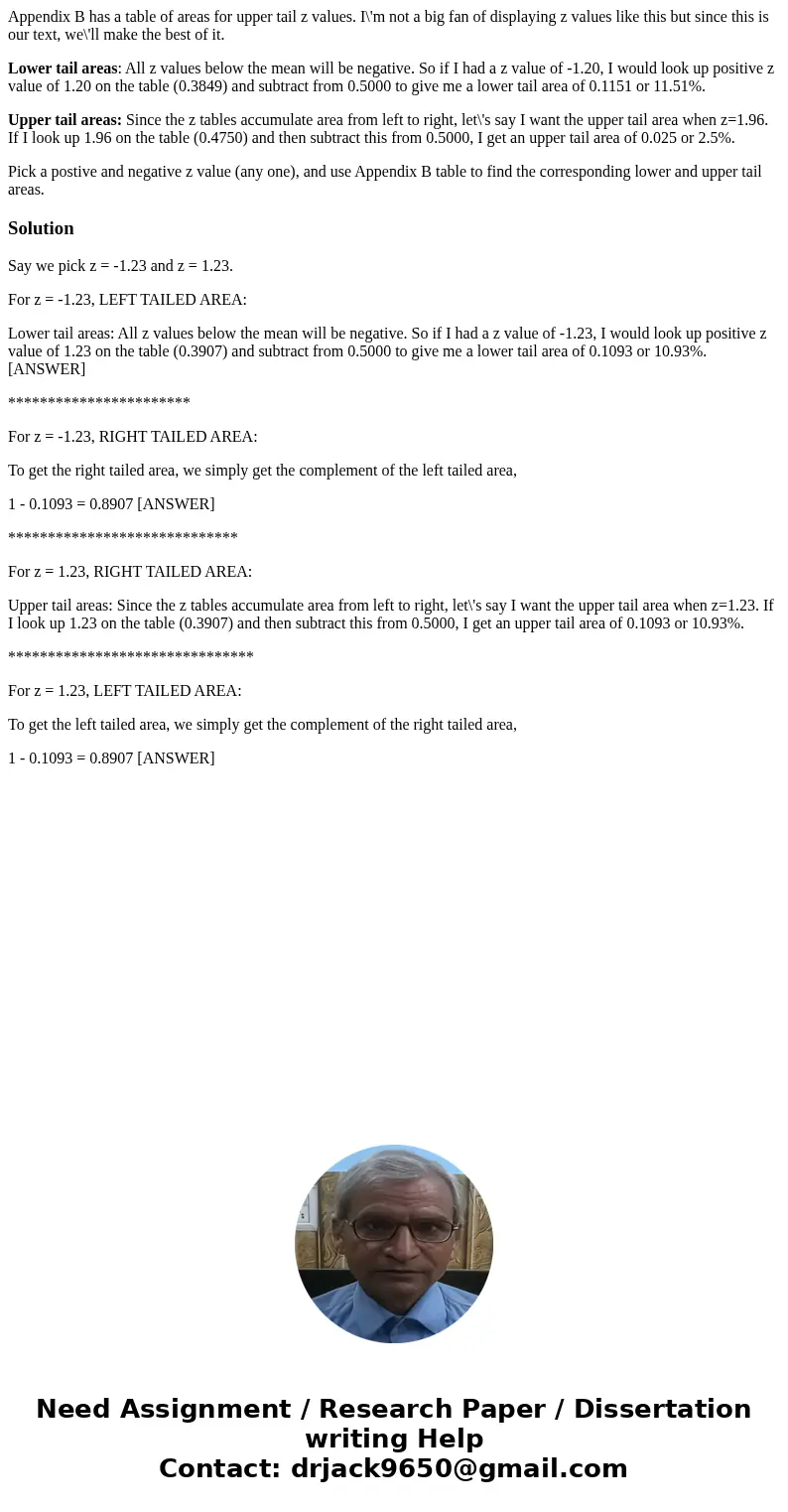Appendix B has a table of areas for upper tail z values Im n
Appendix B has a table of areas for upper tail z values. I\'m not a big fan of displaying z values like this but since this is our text, we\'ll make the best of it.
Lower tail areas: All z values below the mean will be negative. So if I had a z value of -1.20, I would look up positive z value of 1.20 on the table (0.3849) and subtract from 0.5000 to give me a lower tail area of 0.1151 or 11.51%.
Upper tail areas: Since the z tables accumulate area from left to right, let\'s say I want the upper tail area when z=1.96. If I look up 1.96 on the table (0.4750) and then subtract this from 0.5000, I get an upper tail area of 0.025 or 2.5%.
Pick a postive and negative z value (any one), and use Appendix B table to find the corresponding lower and upper tail areas.
Solution
Say we pick z = -1.23 and z = 1.23.
For z = -1.23, LEFT TAILED AREA:
Lower tail areas: All z values below the mean will be negative. So if I had a z value of -1.23, I would look up positive z value of 1.23 on the table (0.3907) and subtract from 0.5000 to give me a lower tail area of 0.1093 or 10.93%. [ANSWER]
***********************
For z = -1.23, RIGHT TAILED AREA:
To get the right tailed area, we simply get the complement of the left tailed area,
1 - 0.1093 = 0.8907 [ANSWER]
*****************************
For z = 1.23, RIGHT TAILED AREA:
Upper tail areas: Since the z tables accumulate area from left to right, let\'s say I want the upper tail area when z=1.23. If I look up 1.23 on the table (0.3907) and then subtract this from 0.5000, I get an upper tail area of 0.1093 or 10.93%.
*******************************
For z = 1.23, LEFT TAILED AREA:
To get the left tailed area, we simply get the complement of the right tailed area,
1 - 0.1093 = 0.8907 [ANSWER]

 Homework Sourse
Homework Sourse